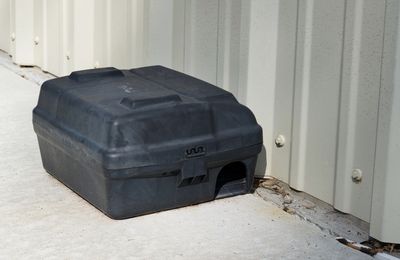Boston Rats & Rodenticides
Understanding Rodenticides: Choosing the Right Tool for Rodent Control
When dealing with a rat or mouse infestation, choosing the right rodenticide can make all the difference. There are multiple types of rodenticides available, each with its own mode of action, safety considerations, and best-use scenarios. Whether you’re a property manager, homeowner, or pest control professional, this guide will help you understand the pros and cons of each type—including tracking powders, an underutilized but powerful tool in urban rodent control.
What Are Rodenticides?
Rodenticides are chemical agents designed to kill or control rodents such as rats and mice. They’re typically used when trapping or exclusion alone isn’t enough to suppress an infestation. Rodenticides come in various formulations: baits, pellets, blocks, and powders, each with distinct advantages.
Types of Rodenticides and Their Pros & Cons
1. Anticoagulant Rodenticides (First- and Second-Generation)
These disrupt blood clotting, causing rodents to die from internal bleeding several days after ingestion.
- Examples: Warfarin (first-gen), Brodifacoum, Bromadiolone, Difenacoum (second-gen)
- Pros:
- Delayed action avoids bait shyness
- Effective with a single feeding (second-gen)
- Delayed action avoids bait shyness
- Cons:
- Risk of secondary poisoning to pets, predators, and wildlife
- Regulatory restrictions in many states
- Resistance is rising in urban rat populations
- Risk of secondary poisoning to pets, predators, and wildlife
2. Non-Anticoagulant Rodenticides
These include a variety of fast-acting or alternative-mode toxins.
a. Bromethalin
- Pros: Fast-acting, kills within 24–48 hours
- Cons: No antidote, highly toxic to pets and non-target species
b. Cholecalciferol (Vitamin D3)
- Pros: Reduced secondary poisoning risk; causes hypercalcemia
- Cons: Multiple feedings often required; variable effectiveness
c. Zinc Phosphide
- Pros: Rapid kill; strong odor deters secondary ingestion
- Cons: Very dangerous to handle; poor bait acceptance in some populations
3. Rodent Fertility Control (e.g. ContraPest®)
Rather than kill, these products reduce rat populations by preventing reproduction.
- Pros: Humane, low risk to non-target species, no carcass disposal
- Cons: Requires consistent feeding over time, slow population reduction, relatively expensive
4. Tracking Powders: Precision Rodenticide for Inaccessible Areas
Tracking powders are fine dusts laced with toxicant. As rodents walk through the powder and groom themselves, they ingest the active ingredient. These powders are ideal for tight, hidden spaces where bait placement is difficult.
- Examples: Zinc phosphide, Diphacinone-based tracking powder
- Pros:
- Effective in burrows, wall voids, and tight crawlspaces
- Useful in bait-resistant rodent populations
- Can reduce populations quickly in inaccessible zones
- Effective in burrows, wall voids, and tight crawlspaces
- Cons:
- Risk of accidental exposure to non-target species
- Not suitable for open areas
- Regulated use; often restricted to licensed or certified professionals only
- Risk of accidental exposure to non-target species
Important: Most tracking powders are restricted-use pesticides (RUPs) and must be applied by certified pest control operators following strict label guidelines.
Choosing the Right Rodenticide Strategy
The most effective rodent control programs combine rodenticides with exclusion, sanitation, and monitoring. The right product depends on:
- Infestation level and location
- Presence of non-target species (pets, wildlife)
- Resistance patterns
- Legal and environmental constraints
At Ecologic Entomology, we tailor every rodent control plan to your unique site conditions—leveraging tools like second-gen baits, fertility control, and targeted tracking powder applications to deliver sustained population reduction.
Need Help with Urban Rat Advice?
If you're dealing with a rodent infestation in Boston or surrounding areas, contact Ecologic Entomology for education, safety, science, and control options.
Request a Site Survey Today
📍 Serving Boston, Cambridge, Somerville, and the Greater Metro area
📞 (888)780-0110 | 🌐 www.ecologicentomology.com

Common tamper-resistant trap or rodenticide bait station (Bell Labs)
This website uses cookies.
We use cookies to analyze website traffic and optimize your website experience. By accepting our use of cookies, your data will be aggregated with all other user data.